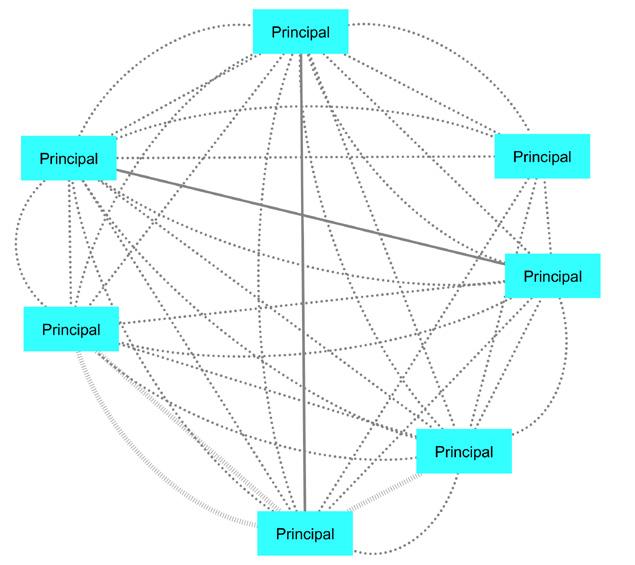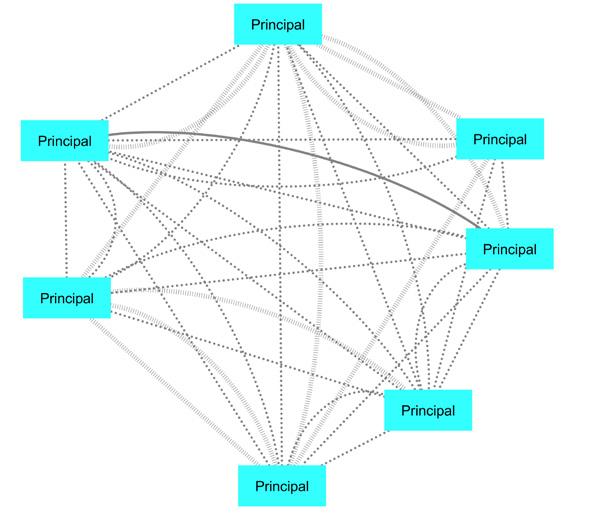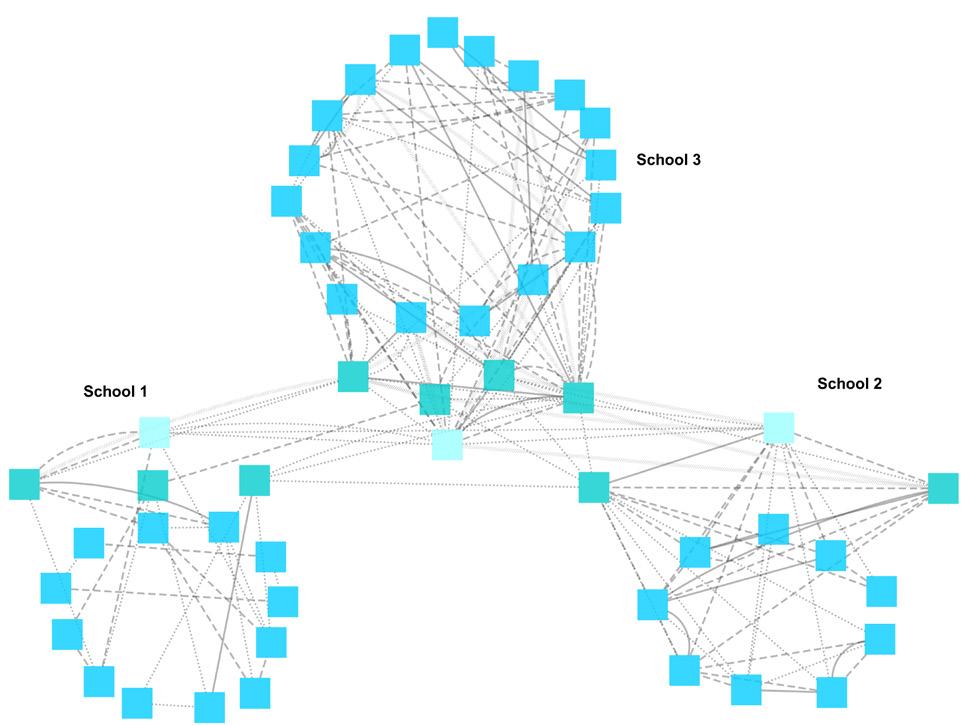
6 minute read
Lead teachers
A strategic plan guided CoP expectations
School leaders did not want a ‘formulaic’ approach to implementation, and were prepared to let Kahukura’s direction and procedures evolve over time. Principals acknowledged that Kahukura started with a shared vision, but without a collective plan about how that vision would be realised. Links from the vision statement to intended outcomes for each focus area, and how these affected learner wellbeing, were not clearly stated. Kahukura’s strategic plan identified activities related to lifting teaching practice in the focus areas, rather than overall objectives or valued outcomes for student progress. One principal offered the opinion that, although there were no learning outcomes specifically identified for Kahukura, the plan nevertheless guides practice with the clear intention to improve student learning.
Advertisement
“Achievement is not in the [CoP] strategic plan, but it is what we do.”
Principal
Bringing the vison to life was left to each individual school, and there were a variety of approaches to the implementation of the Kahukura strategic plan. Schools continued to address their own initiatives alongside collaboration around the focus areas. Each school’s strategic plan varied in how closely they reflected the Kahukura vision. One school’s charter and strategic plan made very clear links to Kahukura’s plan, vision and purpose. The school’s individual aims, and those it shared with Kahukura, were clearly expressed. This school documented the connection between Kahukura and its aims and referenced the importance of establishing a collective learning culture.
Lead teachers facilitated collaborative inquiry
Kahukura’s approach, strongly influenced by the work of Michael Fullan, focussed on embedding new pedagogies and models of learning partnerships between teachers and with their learners.17 fullan has argued this approach is about attacking inequity with excellence.18 Kahukura’s aims have been to develop teachers’ practice through shared professional development and improved collegiality, both within and across schools, to ultimately create lifelong learners.19 As one of their first areas of focus, NPDL has underpinned teaching practice within each school, and the focus and practices applied to subsequent professional learning and whole school development focus areas. Across Kahukura, principals established a Lead teacher role in each school for each focus area, looking for passion, commitment, and ability when making these appointments. The intention was for Lead teachers to remain close to their colleagues and learners in their school. They designed and trialled changes in teaching practice with their own classes and used feedback from students to make improvements. Lead teachers then worked with their school’s teachers to share and further develop good practice. They not only provided guidance in their own schools, but also shared examples of good practice with other focus area leaders across Kahukura. As shown in figure 4, Lead teachers connected regularly with each other across Kahukura.
17 fullan M. & Langworthy M (2014) ; A Rich Seam How New Pedagogies Find Deep Learning michaelfullan.ca/wp-content/uploads/2014/01/3897.Rich_Seam_web.pdf 18 fullan M. and Gallagher J.M. (2017) “Transforming Systems, Deep Learning and the Equity Hypothesis”
Paper prepared for the Learning Policy Institute, Stanford university 19 Ibid.
FIGURE 4: Lead teachers across Kahukura worked together regularly to present new practice
Key
Less than monthly Monthly Lead Teacher
Source: ERO SNA Survey
Within each focus area, principals and Lead teachers gathered feedback from their schools on ideas, suggestions, and reflections. This information about what had worked well and what needed to be refined supported them to develop a more responsive curriculum for students in each of their schools (see Table 2).
Teachers reported they have become more reflective in their practice, which they attribute to guidance from Lead teachers.
TABLE 2: Lead teachers worked to build teachers’ capability in the focus areas
Focus area Lead teachers:
Deep learning • supported teachers by making explicit connections between deep learning and the Key Competencies • updated how their school was progressing with inquiry and what was expected of their teachers in this focus area • took relevant information back to teachers in their school on what was expected of them, as agreed in the focus area meetings. for example, one school designed a science unit with a deliberate focus on deep learning strategies. Teachers shared with their colleagues how they moved students from surface to deep understanding and knowledge of the science.
Cultural responsiveness
• supported a sequential programme across Kahukura to build teacher confidence in te reo and tikanga Māori • created resources appropriate to their school’s context. for example, one school’s local history was covered progressively at each year level. This supported teachers and students to increase their knowledge, understanding and experience of their local history and context.
Creativity (music)
• shared their knowledge about music with teachers, and how they could integrate it into other curriculum areas to encourage children to be confident and creative learners in this area.
for example, music often plays a part in peace movements or songs developed to record historical events or memorise facts.
Leadership • were supported to build their capability through professional development in their focus area • supported teachers to monitor their practice and suggested professional development opportunities for them. for example, Lead teachers played a pivotal role in helping teachers strengthen inquiries into their practice.
Inclusiveness • shared their increased knowledge about appropriate interventions and relevant strategies to promote inclusiveness • provided annual professional development for middle leaders • analysed and shared information about students across Kahukura, including about students’ wellbeing and/or behavioural issues, how these affect their ability to be included and contribute to learning needs. for example, SENCOs worked with teachers to help them with learning strategies for individual learners.
One senior school leader noted the pedagogy of deep learning took time to establish, but teachers now had a greater understanding of how this could be used across the other focus areas:
“deep learning is a way [of] learning … it is about practice and we want to make this so for Māori, music and other subjects.”
Senior leader
At the time of ERO’s visit, Lead teachers were extending their collaboration by linking strategies from across the focus areas. An example of this is described in relation to a unit undertaken across Kahukura on Parihaka (below).
Integrating three focus areas in one unit Lead teachers of cultural responsiveness designed a unit following a presentation about Parihaka at a Kahukura teacher-only day. Teachers across Kahukura then delivered the same unit. Following that, Lead teachers conducted an inquiry into the outcomes of the unit. The inquiry recognised the learning successes, but also how learning needs could be better addressed through the deep learning focus area. Making links to the deep learning focus area enhanced student thinking and understanding about a historical incident and the impact it had on subsequent generations of both Māori and non-Māori.
This unit also led students to investigate how music has influenced change throughout history by introducing music about ‘freedom’ and ‘fighting for your rights’. Students then shared their learning, or made their own statement, through the performing arts.
Inquiry work challenged thinking
Many schools made teachers’ inquiry targeted around the focus areas. The practice made it clear to teachers that these focus areas were an integral part of their work, not additional to it. Leaders made sure new teachers were supported to understand and use strategies related to the focus areas. In one school, a new teacher was paired with an established teacher who acted as a mentor to guide practice. As part of the NPDL, teachers regularly reflected on their practice. As part of the deep learning focus area, teachers gathered and used student feedback for inquiry into their practice. Teachers reflected on how their teaching contributed to students increased understanding of the learning process and contributed to their agency. Teachers in one school filmed their discussion about the impact of shifts they had made in their teaching when delivering a particular unit of learning. They used the film to share their practice and learning with colleagues. Leaders considered using similar review processes to explore the effectiveness of practice in other focus areas. The film also provided excellent evidence for leaders to plan priorities for professional learning.






